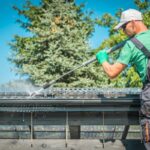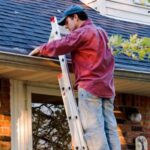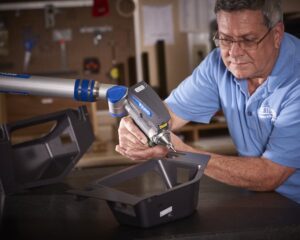Phoenix’s unique climate and growing urban environment make fire safety a critical concern for homeowners and business owners alike. Routine fire inspections play a vital role in identifying potential fire hazards early, helping to prevent devastating incidents and ensuring compliance with local safety regulations. Understanding the most common fire hazards uncovered during these inspections can help you proactively protect your property and those within it.
Why Fire Inspections Matter in Phoenix?
The dry heat and occasional high winds in Phoenix increase the risk of fires spreading rapidly, which puts properties at greater risk. Fire inspections are designed to thoroughly assess buildings and surrounding areas for potential risks that could ignite or fuel fires. These inspections evaluate everything from electrical systems to storage practices, providing a comprehensive safety check.
Identifying hazards early means they can be corrected before they pose a serious threat. This proactive approach is essential in Phoenix, where the combination of weather and urban density demands rigorous attention to fire safety.
Common Fire Hazards Found During Routine Inspections
1. Faulty Electrical Wiring and Equipment
Electrical issues remain one of the leading causes of fire hazards. Inspections often reveal outdated wiring, overloaded circuits, and improperly maintained electrical panels or outlets. In Phoenix, where air conditioning units run extensively, faulty wiring can easily overheat and spark fires. Ensuring electrical systems meet current codes and are regularly maintained is critical.
2. Blocked or Inaccessible Fire Exits
Fire safety regulations require clear, unobstructed exits to allow for safe evacuation. Inspections frequently uncover blocked pathways, locked emergency exits, or missing exit signs. In emergencies, every second counts, so maintaining proper exit accessibility is vital for the safety of occupants.
3. Improper Storage of Flammable Materials
Many commercial and residential properties store flammable liquids, gases, or other combustible materials. During fire inspections, improper storage practices—such as storing these materials near heat sources or in non-ventilated areas—are common violations. Proper containment and labeling reduce the risk of accidental ignition.
4. Lack of or Non-Functional Fire Extinguishers
Fire extinguishers are essential for quickly controlling small fires, but inspections often find missing or expired extinguishers. Others may be placed incorrectly or lack clear instructions for use. Regular maintenance and training on extinguisher use are critical components of fire safety.
5. Neglected Fire Alarm and Sprinkler Systems
Fire alarm and sprinkler systems are fundamental in detecting and suppressing fires early. During routine inspections, issues like dead batteries, disconnected alarms, or malfunctioning sprinkler heads frequently come to light. These systems must be tested regularly to ensure they function correctly in an emergency.
6. Accumulation of Combustible Debris
Garbage, paper, packaging materials, and other combustible debris can accumulate quickly, especially in commercial settings. Inspections often highlight areas where trash or storage materials are piled near ignition sources, creating easy fuel for fires. Proper housekeeping and waste management practices are necessary to minimize this risk.
7. Blocked or Damaged Ventilation Systems
Ventilation systems help control smoke and heat during a fire, but inspections often reveal blocked ducts, damaged filters, or improper cleaning schedules. These issues can exacerbate fire spread and reduce air quality during an emergency.
The Importance of Professional Fire Inspection Services in Phoenix
Given these common hazards, professional fire inspection services in Phoenix provide invaluable expertise. Certified inspectors follow thorough checklists and apply local fire codes to identify and report potential risks. Their knowledge of Phoenix-specific factors—such as building codes and climate challenges—ensures a focused approach to fire prevention.
Professional inspections not only identify visible hazards but also detect hidden dangers that property owners might overlook. This can include worn electrical components inside walls or poorly maintained fire suppression equipment. Early detection through routine inspections means corrective actions can be taken swiftly, protecting lives and property.
Preparing for a Fire Inspection
To get the most from a fire inspection, property owners should prepare by reviewing common hazards and addressing obvious issues. Clear pathways, functional fire extinguishers, and accessible alarm systems are simple steps that can make a difference. Documentation of maintenance activities and training records should also be organized for review.
Being proactive demonstrates a commitment to fire safety and can streamline the inspection process. It also reduces the likelihood of costly citations or insurance complications following the inspection.
Taking Fire Safety Seriously in Phoenix
Fire hazards can escalate quickly in Phoenix’s climate, making vigilance essential. Routine fire inspections are more than a regulatory requirement—they are a critical tool for ongoing protection. By understanding the most common hazards and working with experienced fire safety professionals, property owners can reduce risks and enhance their preparedness.
If you want to ensure your home or business is protected from fire risks, engaging with knowledgeable fire inspection services is a wise step. That’s where experienced local providers like Sting Alarm come in—offering thorough inspections tailored to the unique needs of Phoenix properties. The company is known for its deep expertise and commitment to helping clients maintain safety and compliance through reliable fire inspection solutions.
To learn more about how they can support your fire safety efforts, call 6024311300 today!
- Why Fire Inspections Matter in every house and business?
- Routine fire inspections play a vital role in identifying potential fire hazards early, helping to prevent devastating incidents and ensuring compliance with local safety regulations. Understanding the most common fire hazards uncovered during these inspections can help you proactively protect your property and those within it.
- fire inspection, fire protection, fire protection services
Related posts:
 Can Residential End of Lease Cleaning Help You Get Your Bond Back?
Can Residential End of Lease Cleaning Help You Get Your Bond Back?
 How Much Do Gutter Services Cost in Bradford in 2025 | Complete Price Guide
How Much Do Gutter Services Cost in Bradford in 2025 | Complete Price Guide
 Top-Rated Swimming Pool Remodeling in Hoover AL You Can Trust
Top-Rated Swimming Pool Remodeling in Hoover AL You Can Trust
 Hosting a Big Event? Pre & Post-Party Cleaning Tips You’ll Thank Us For
Hosting a Big Event? Pre & Post-Party Cleaning Tips You’ll Thank Us For
 Safeguard Your Home: Professional Gutter Cleaning Fairfield Keeps Water Where It Belongs
Safeguard Your Home: Professional Gutter Cleaning Fairfield Keeps Water Where It Belongs
 Control Moisture and Prevent Mildew with Transparent Tarpaulin
Control Moisture and Prevent Mildew with Transparent Tarpaulin
 Gutter Cleaning Heathmont – Safeguard Your Home with Expert Gutter Maintenance
Gutter Cleaning Heathmont – Safeguard Your Home with Expert Gutter Maintenance
 Tips for Selecting the Best Kitchen Remodeling Services For Your Home
Tips for Selecting the Best Kitchen Remodeling Services For Your Home







